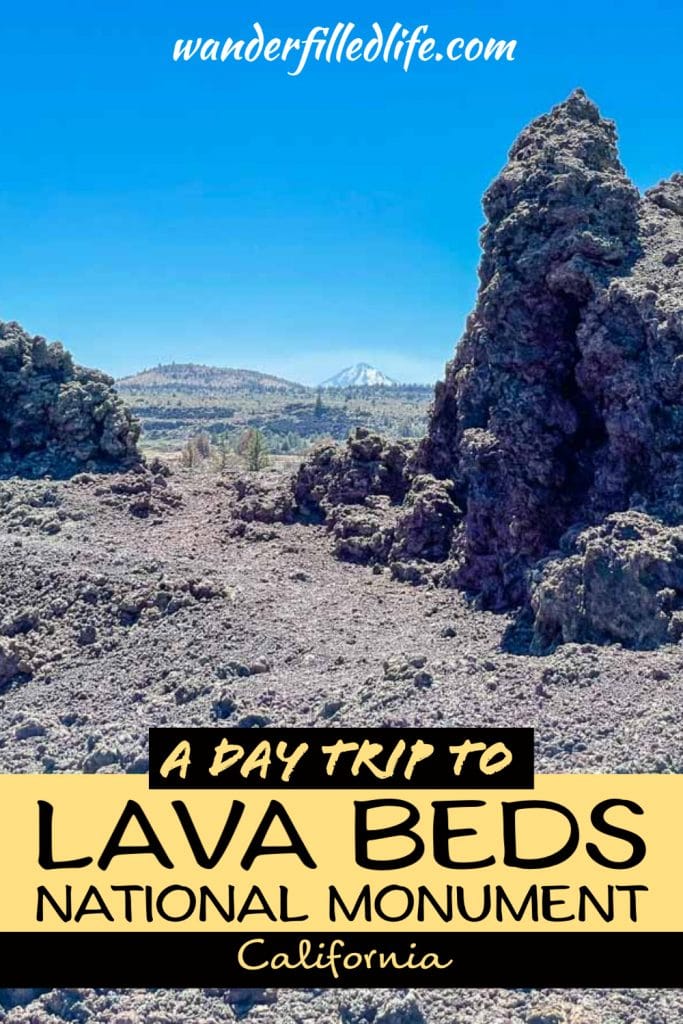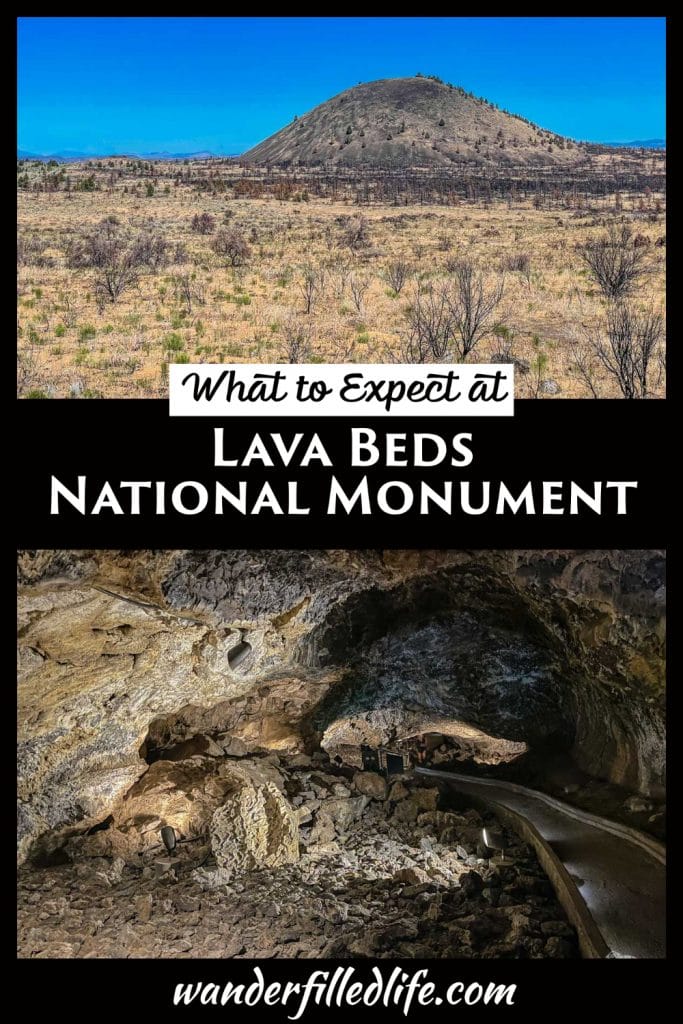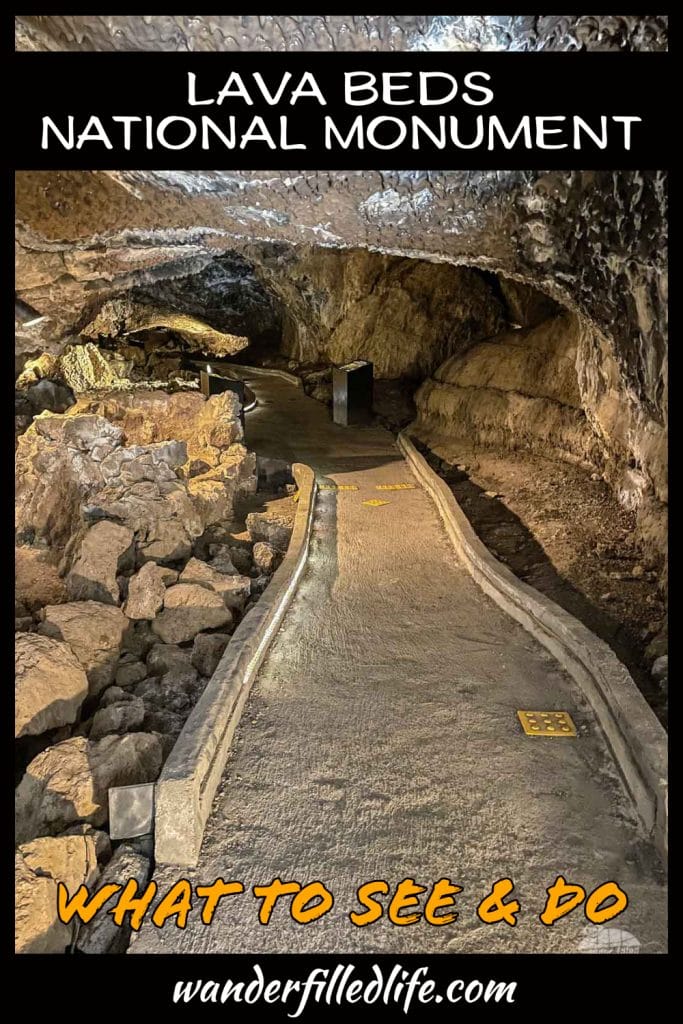Last Updated on March 24, 2024 by Bonnie
Northern California’s Lava Beds National Monument is a vast volcanic landscape covered in, well, lava. It is also home to a variety of volcanic formations including fumaroles, cinder cones, spatter cones, pit craters and quite a few lava tubes.
Most of Lava Beds National Monument is covered in basaltic lava flows, vast expanses of smooth lava. But under the flows are the largest concentration of lava tubes in North America. Out of the more than 700 lava tubes and caves in the park, 27 have marked entrances and are developed for public access.
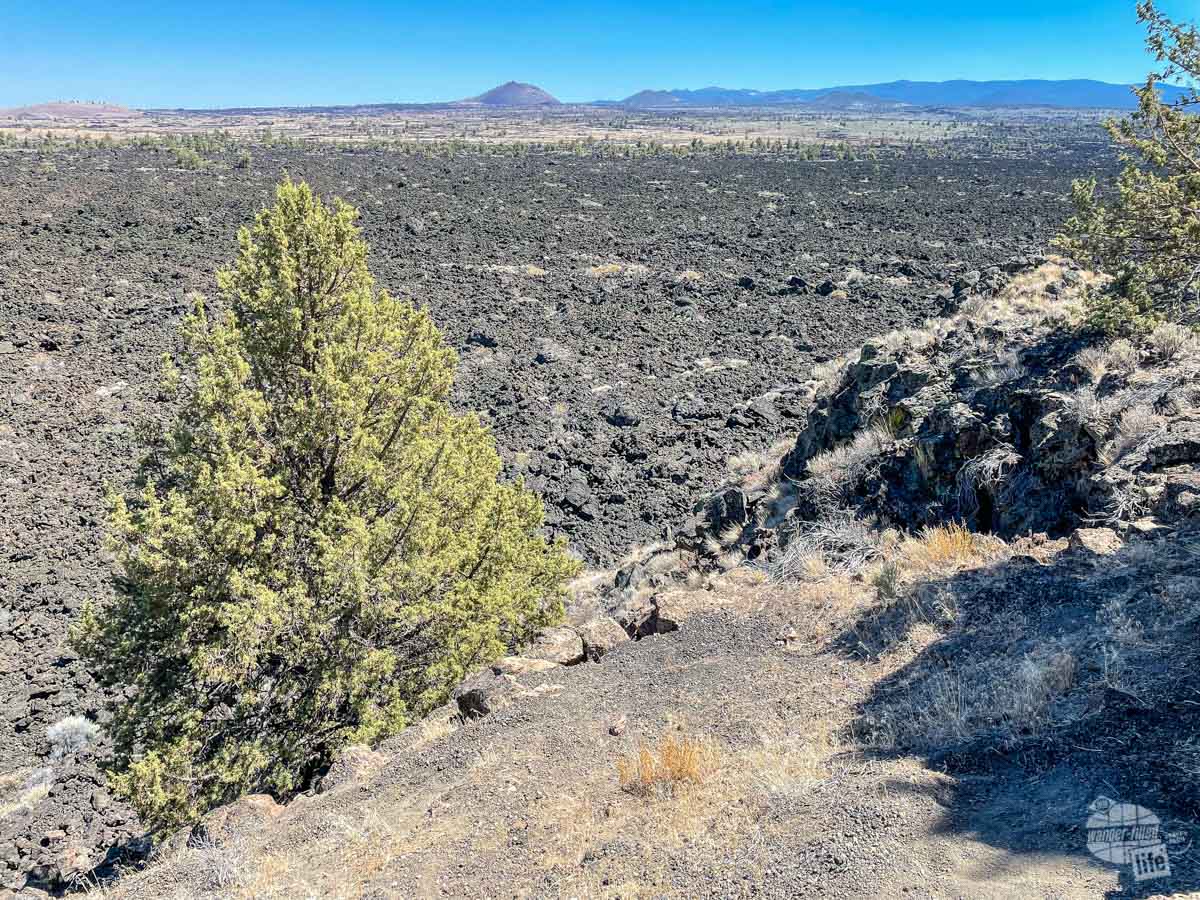
The best part of the lava tubes? You get to explore them on your own! In most caves in the National Park Service, the only way to experience the underground environment is on a guided tour. Here, you can grab a flashlight and good shoes and explore the lava tubes on your own.
(Disclaimer: When we link to places where you can buy our stuff or places we stayed, we are using special codes that earn us commissions on the sales at no additional cost to you. Please see our Review Policy for more information.)
Visiting Lava Beds National Monument
Your first stop on a Lava Beds National Monument day trip should be the Visitor Center. Aside from the excellent exhibits and film on the park, the rangers are your best resource before exploring the lava tubes.
We made a point to ask for recommendations based on our experience in caves and the level of difficulty we wanted to experience. We were also able to get some recommendations on other sites to see in the park.
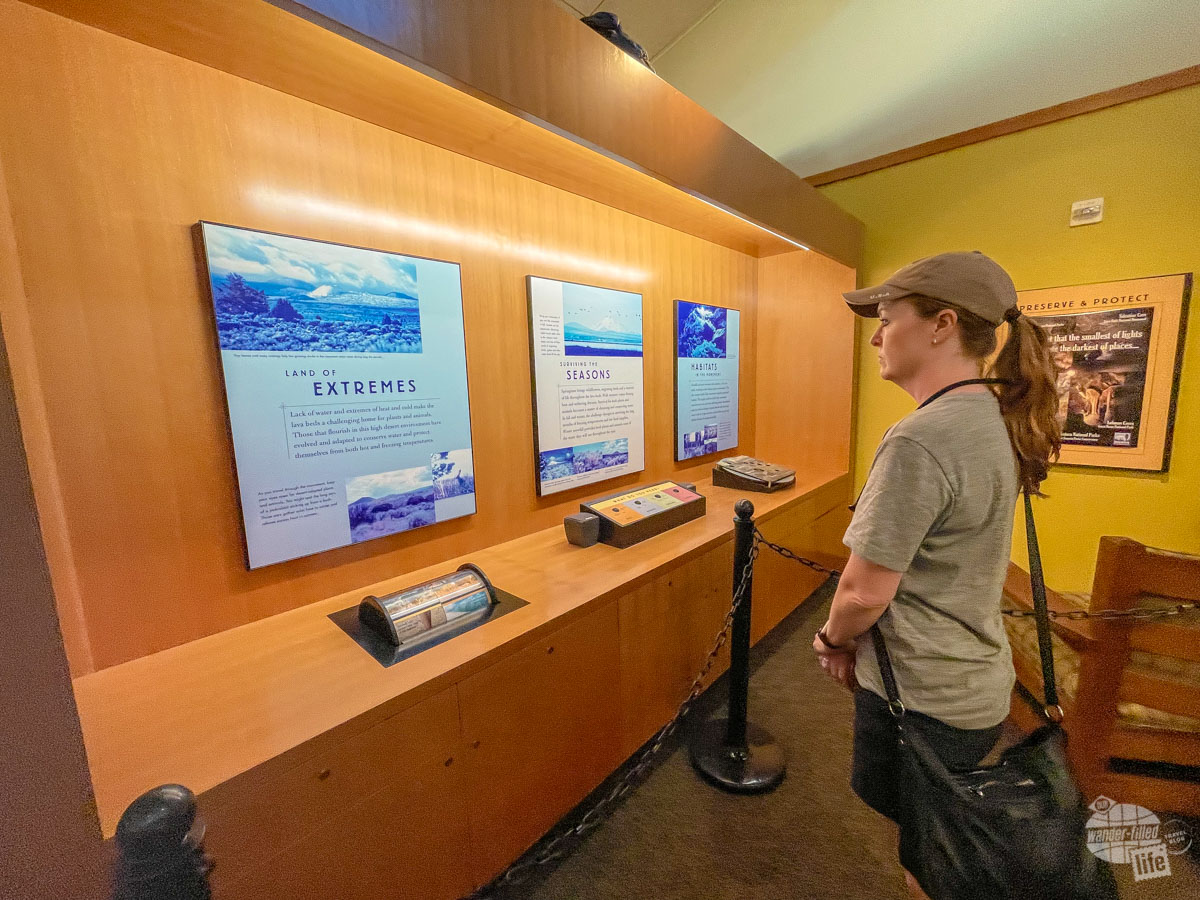
In terms of gear for exploring the lava tubes, at the very least, you need a flashlight (or better yet, a headlamp) and closed-toe shoes. Since the temperature in the caves is about 55 degrees, you might want a long-sleeve layer and, perhaps, pants. If you are planning on doing any of the more challenging caves, a helmet, gloves and kneepads are necessary.
In terms of lights, make sure every person in your group carries some sort of backup light and some extra batteries, especially if you are doing a longer cave. You can borrow lights from the Visitor Center if you need them.
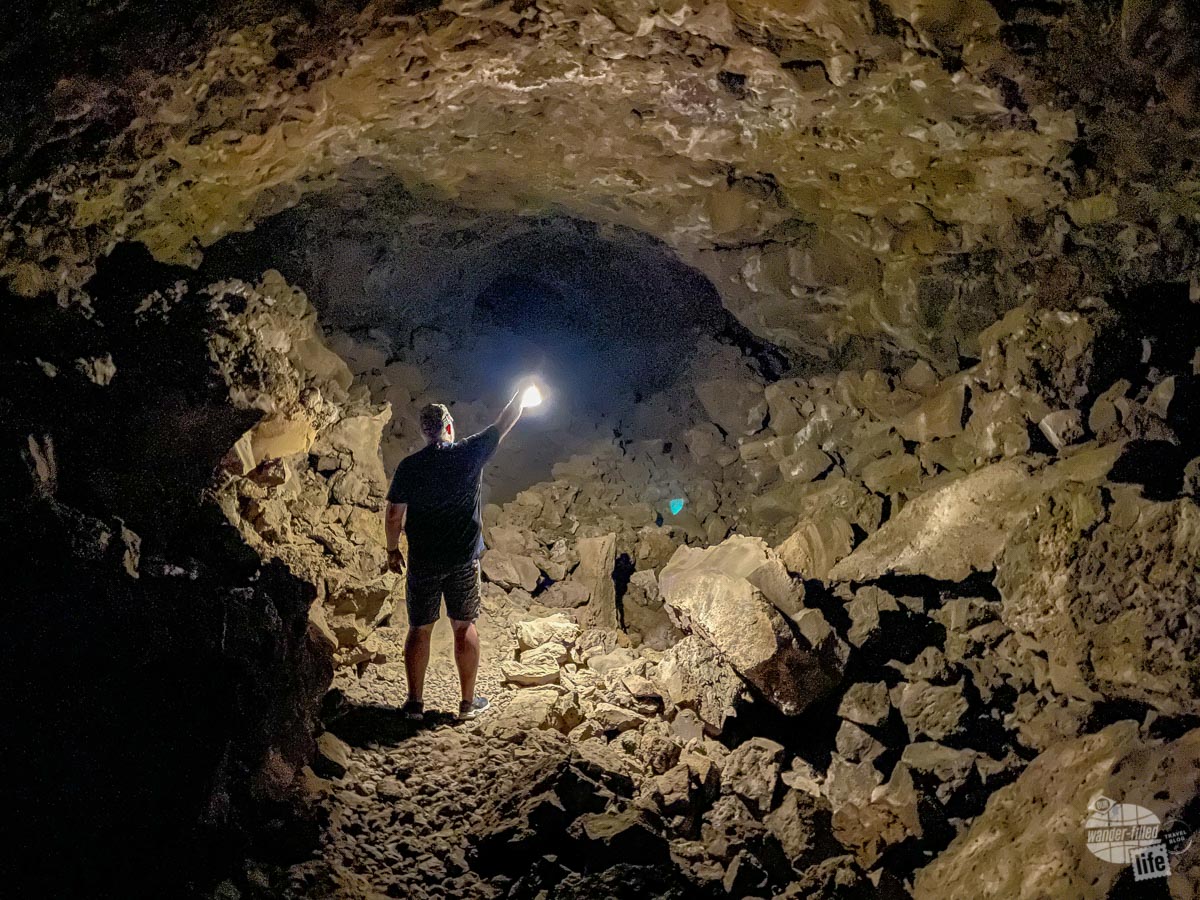
White-Nose Syndrome
One thing you need from either the Visitor Center or the entrance station is a caving permit. The permits are free and designed to make sure that you are not potentially bringing White-Nose Syndrome to the bats of the park.
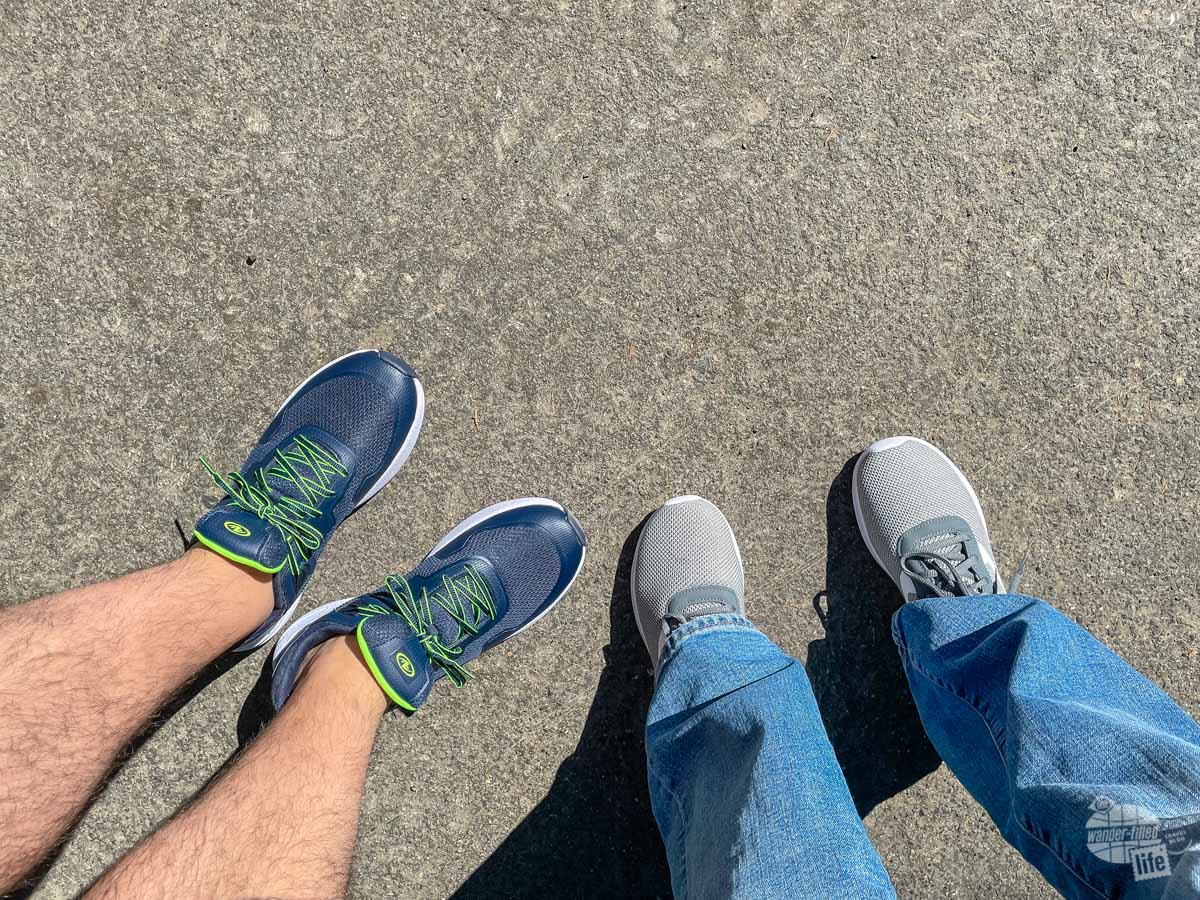
White-Nose Syndrome is a fungus that can easily be spread on clothing, boots and gear. The disease kills bats and is responsible for bat deaths all over the country. The best advice is don’t wear anything that has been in another cave at all. For us, this meant buying new shoes to wear in both Oregon Caves National Monument and Lava Beds National Monument since we wore the other shoes we had with us in Timpanogos Cave National Monument and the Subway Cave outside Lassen Volcanic National Park on this trip.
Read our tips for visiting a National Park Service cave here.
Exploring the Lava Tubes at Lava Beds National Monument
Mushpot and Golden Dome
The rangers recommended we start our Lava Beds National Monument day trip with the Mushpot. This cave is listed as the least challenging and you don’t even need a light. There is an illuminated, paved walkway and exhibits within the cave, making it the most accessible in the park. While you don’t need a flashlight, we did use ours in a few places.
This lava tube has a bunch of great exhibits on the various formations of the lava within the tubes. This is the perfect first cave to explore and if you only do one lava tube, do this one.
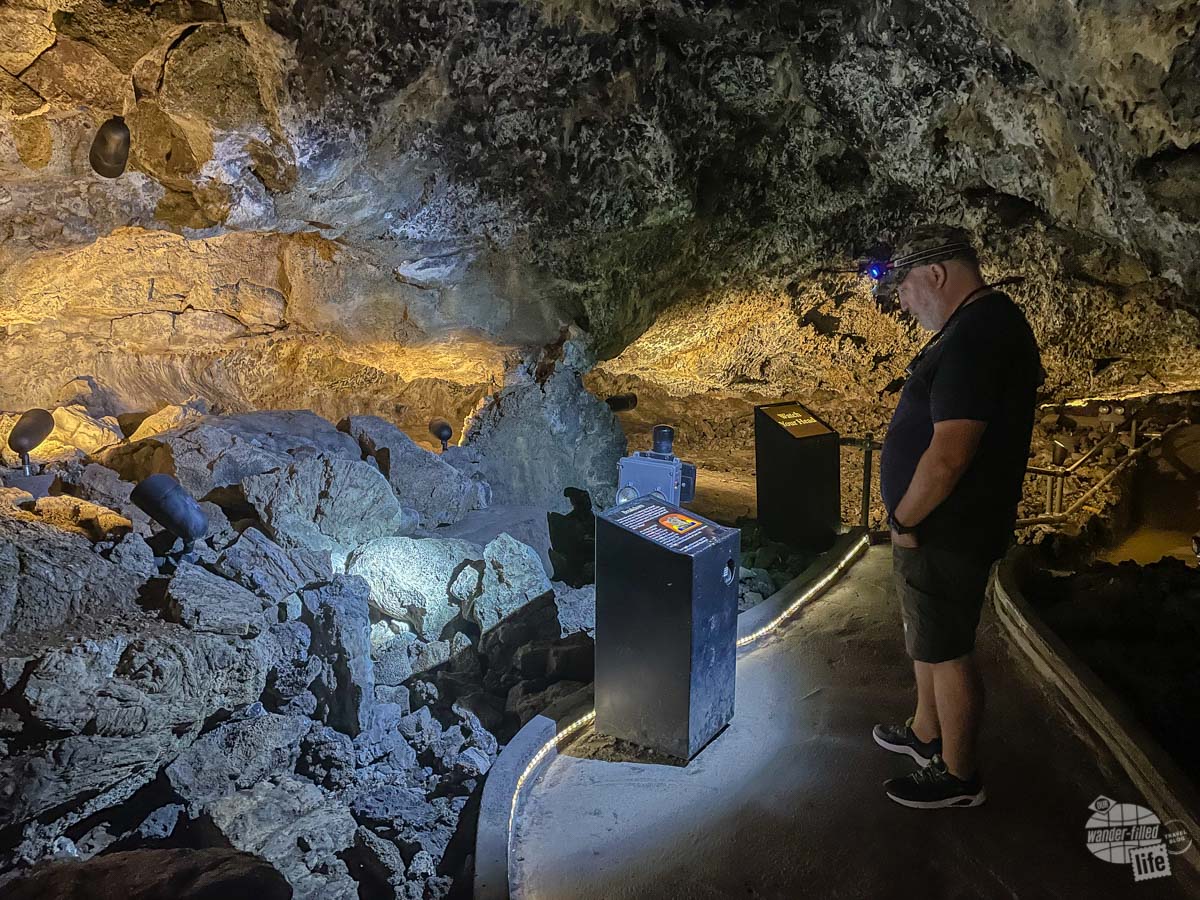
From there, we headed along the Cave Loop Road to Golden Dome, a moderately challenging cave. You will need solid shoes for this cave as the floor is littered with jagged volcanic rock and there are some spots where you will need to stoop. While we did not need a helmet, we were glad to have on hats to offer basic protection for our heads.
In this cave, you can explore in both directions but be sure to look up! The cave gets its name from the golden ceilings, which are quite striking.
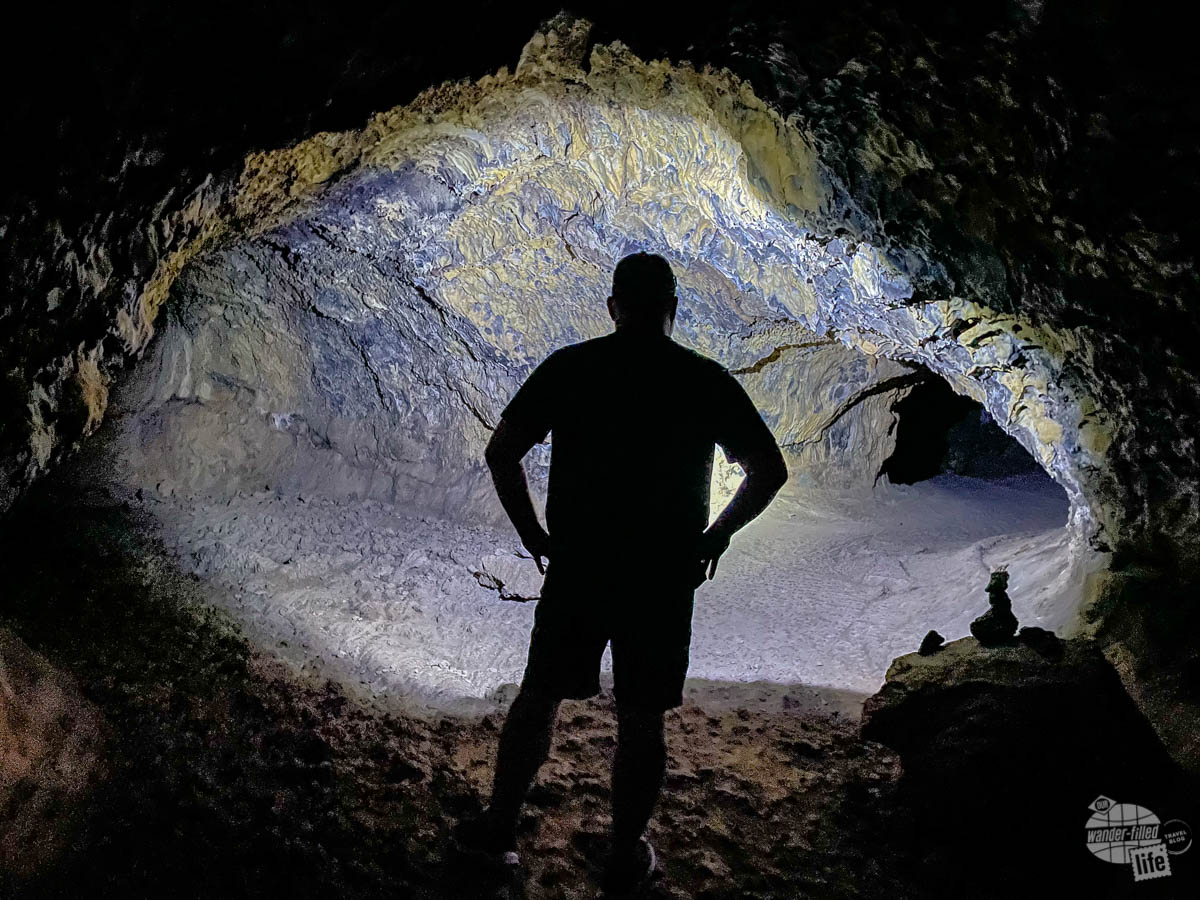
Sentinel and Skull Caves
From there, we drove to Lower Sentinel Cave. Lower Sentinel Cave connects with Upper Sentinel Cave, so we hiked through exploring the inside of this rugged lava tube. Being able to walk all the way through the cave and then just loop back to the truck made this our favorite cave to explore. For us, it was just challenging enough without being uncomfortable.
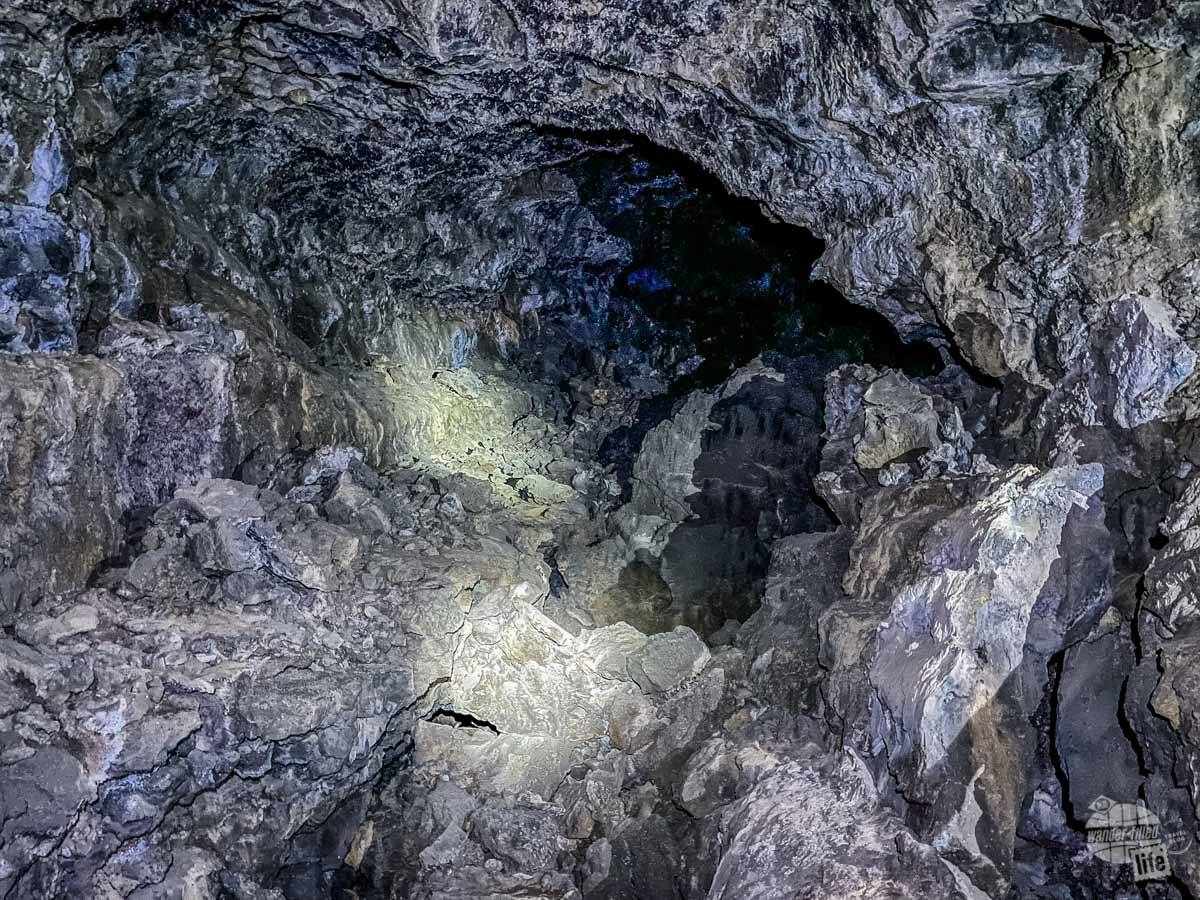
The last cave we explored was Skull Cave, which is located off the main road a ways from the Visitor Center. One of the most popular lava tubes in the park, Skull Cave has a massive entrance and is completely awe-inspiring as you walk in.
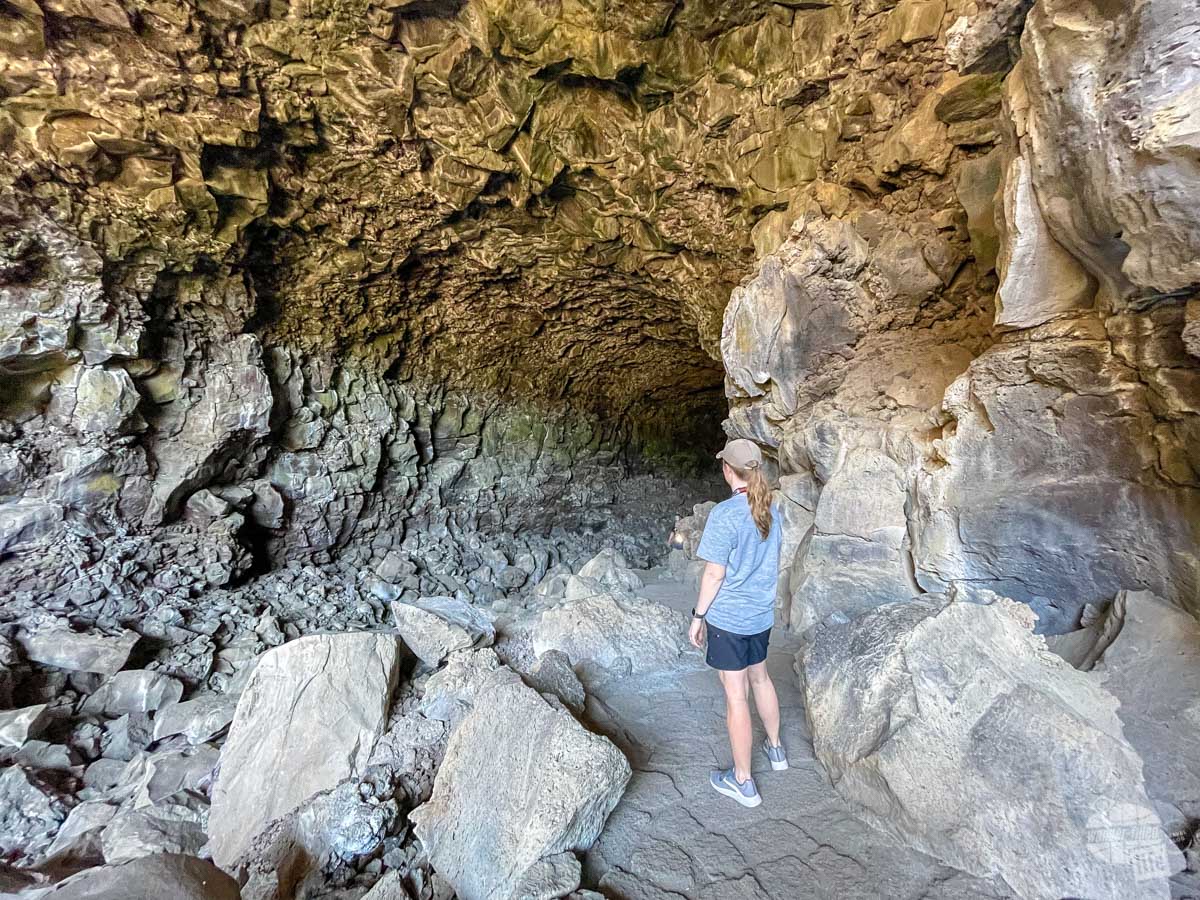
The other attraction of Skull Cave is the ice floor. As you descend into the cave, the temperature drops and the metal staircases start getting more and more uncomfortable with bare hands. Soon, you will reach the ice floor, a large flat section of cave that collects enough moisture to form ice and stay frozen year-round.
There are several other ice caves in the park and they serve as a vital supply of water during the summer months for wildlife.
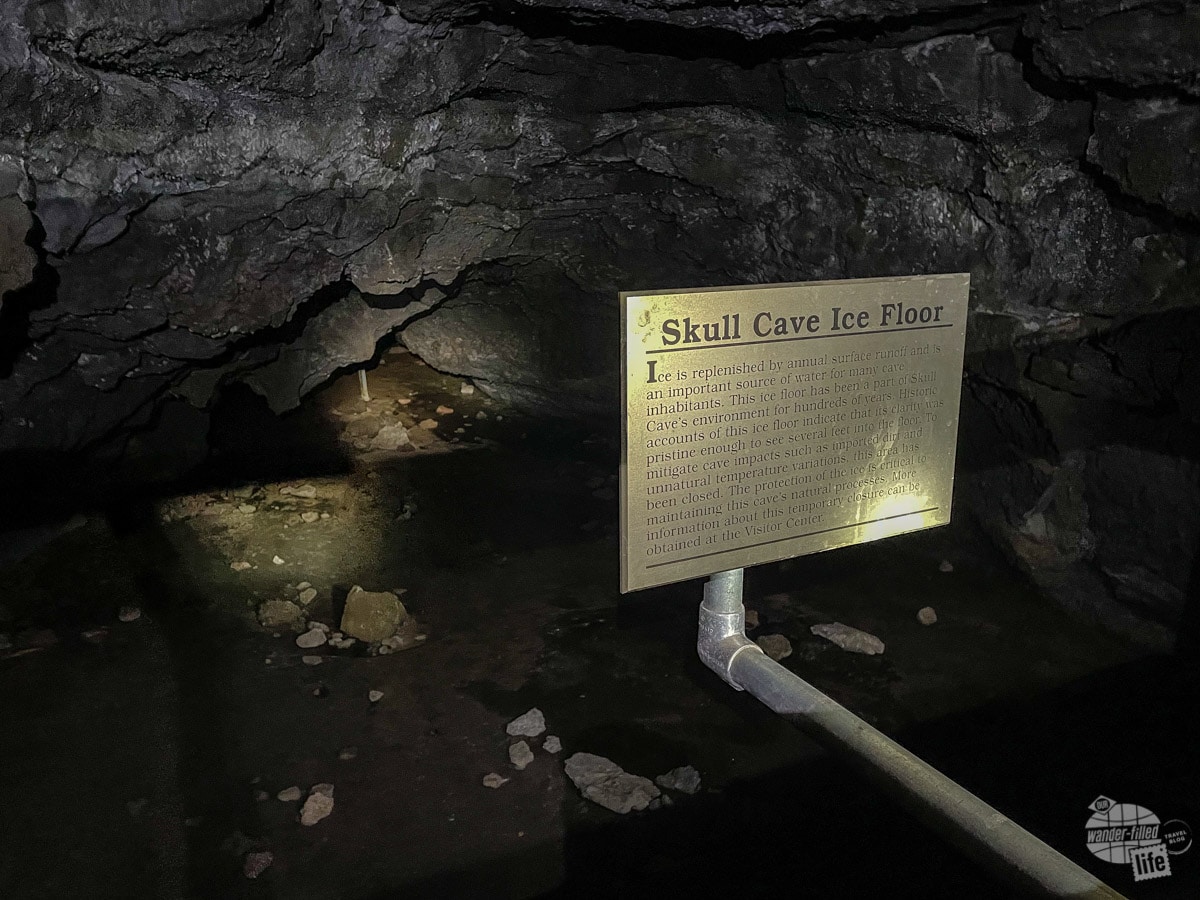
Exploring Above Ground on Your Lava Beds National Monument Day Trip
Much like Craters of the Moon National Monument, Lava Beds is a rugged landscape. Still, there are several hikes you can do if you don’t mind the lack of shade. If you do decide to go for a hike, be sure to check in with the Visitor Center to see what is open. Unfortunately, the park has been affected by wildfires in recent years and we found several closures while we were there.
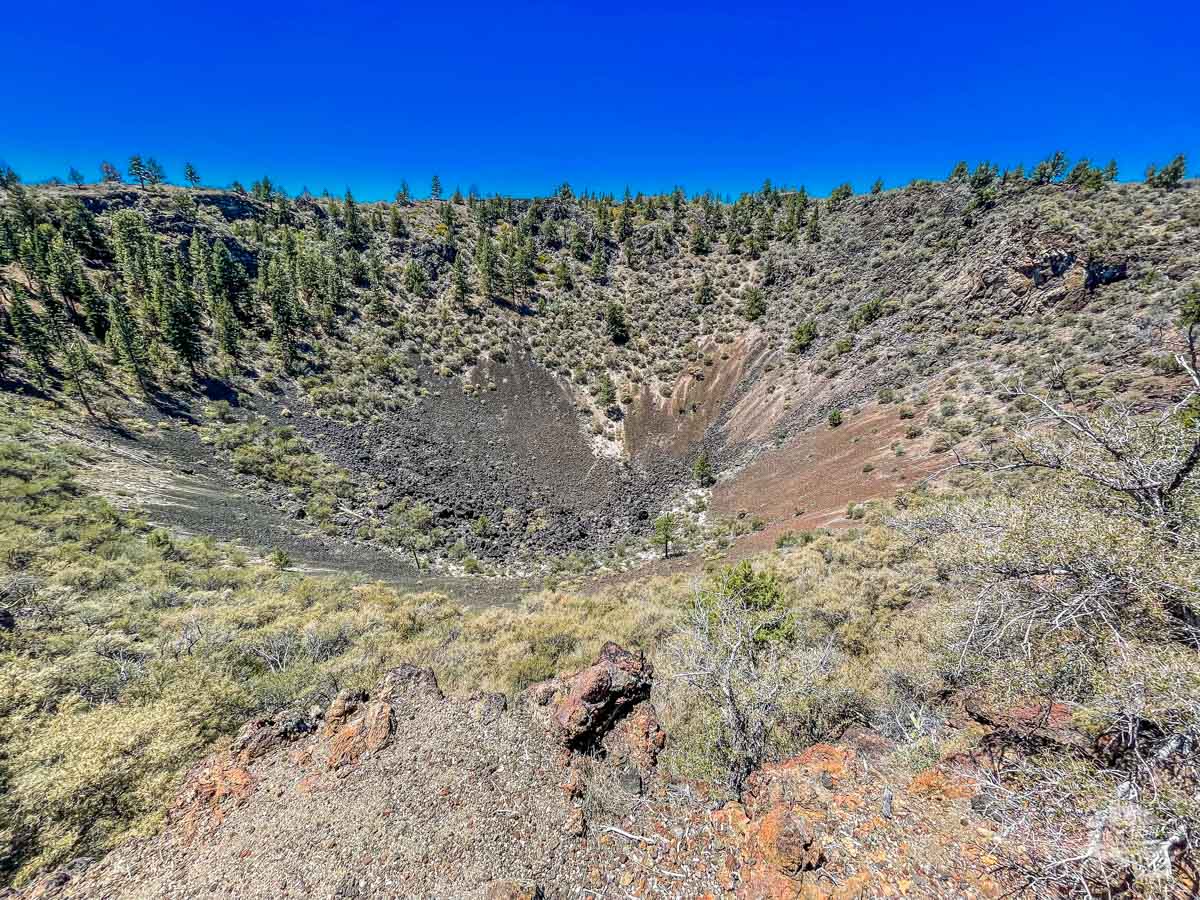
We made a point to get out to the Mammoth Crater, which is aptly named. This massive crater at the south end of the park is responsible for most of the lava flows in the park.
We also stopped at Black Crater, a spatter cone volcano. We hiked the short but rugged trail up to the cone itself, which had great views of nearby Schonchin Butte, a cinder cone volcano.
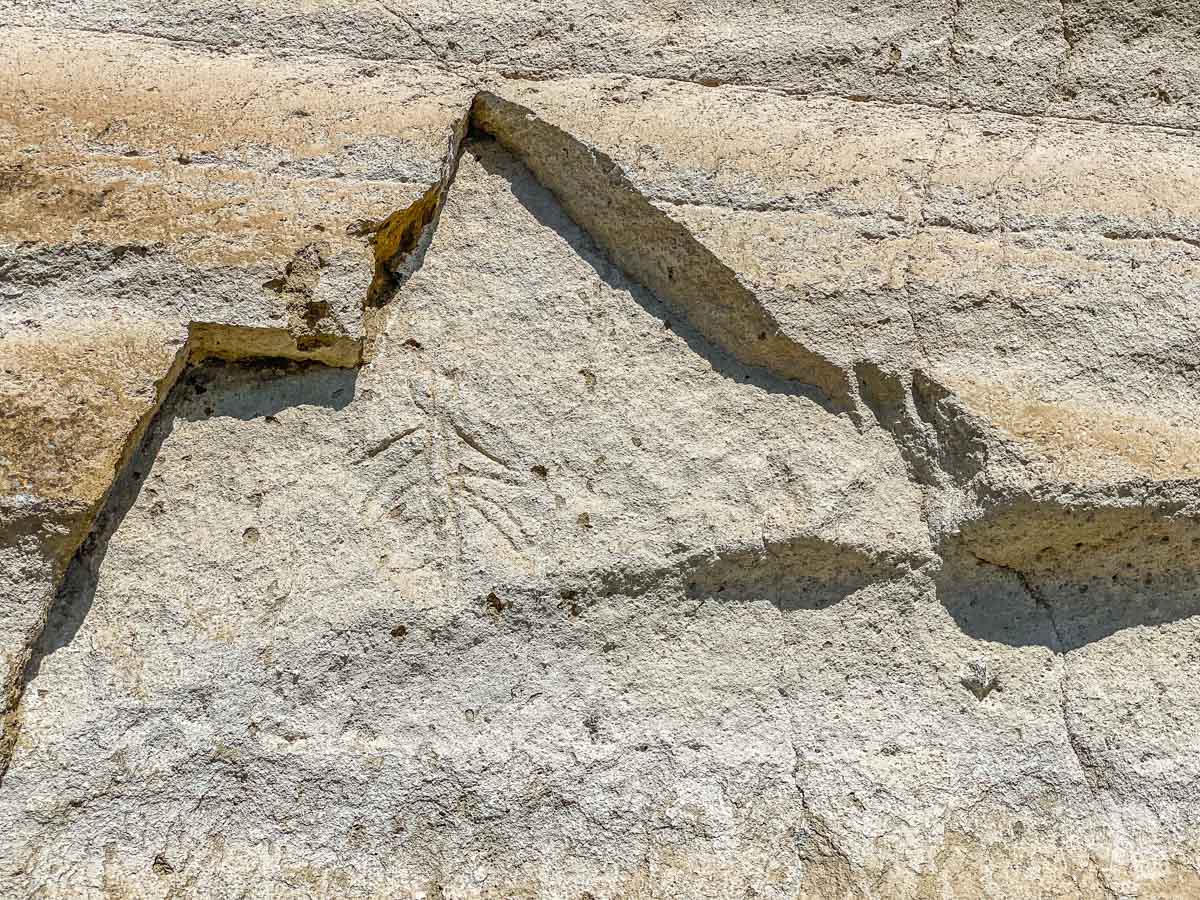
There is also a small unit, called Petroglyph Point, to the northeast that contains petroglyphs along a cliff wall. It is an interesting but brief stop.
Modoc War Sites
Your Lava Beds National Monument day trip will also take you to several sites from the Modoc War, one of the Indian Wars, including Captain Jack’s Stronghold.
During the war, the Modoc, under their leader Kintpuash (known as Captain Jack), used the rugged lava fields as a defensive stronghold and held off the US Army for months. The Modoc were pushing for their own reservation, one where they did not have to share land with other tribes they regarded as rivals.
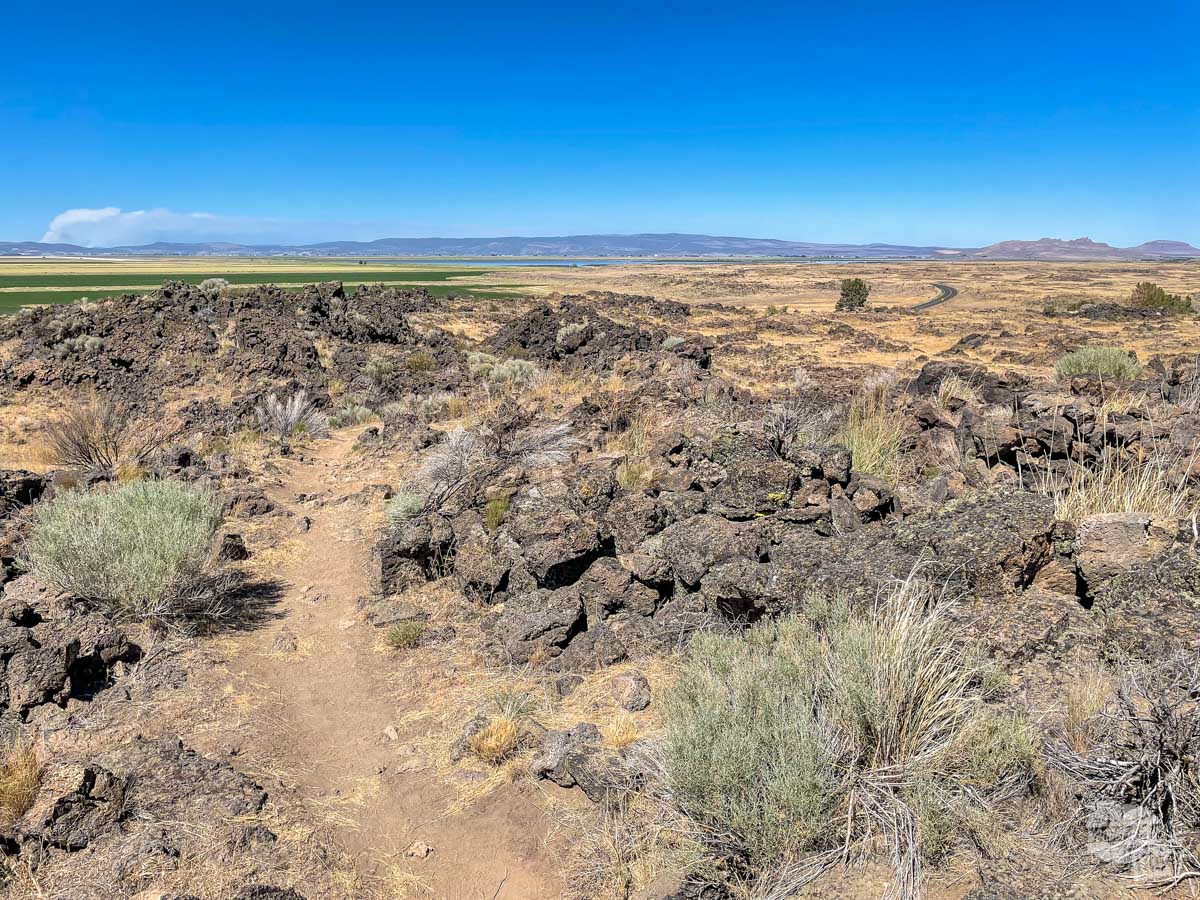
We hiked through the stronghold on a great loop trail which highlights how difficult the terrain is and makes it easy to understand how the much smaller Modoc forces held off the Army for so long.
Check out our 10 essentials for hiking here.
It is also home to the Canby Cross, commemorating the loss of General Edward Canby, the only general officer to die in the Indian Wars. He was part of a peace commission with the Modoc. When talks broke down, Kintpuash killed him and another peace commissioner, hoping the deaths of the leaders would force the Army to withdraw. Instead, the Army sent even more troops.
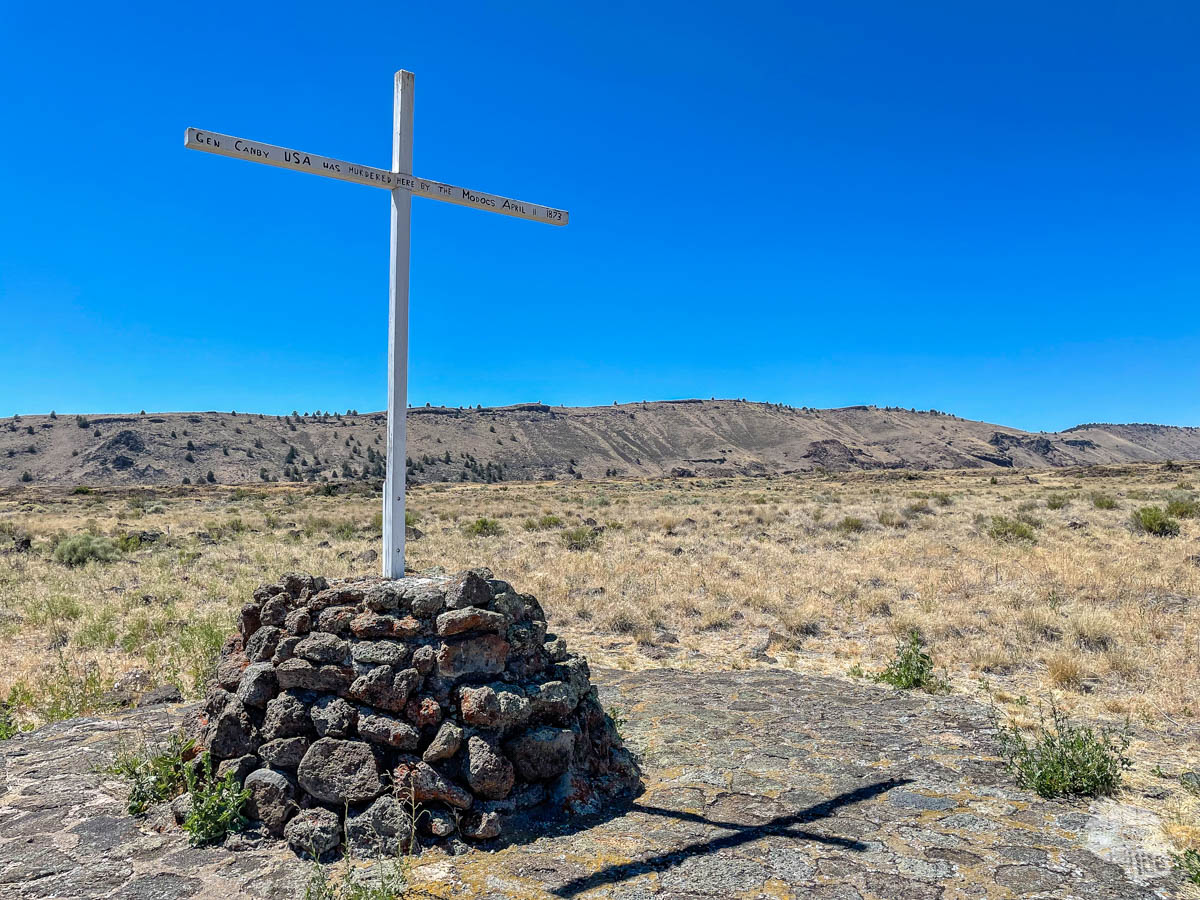
Getting to Lava Beds National Monument
Lava Beds National Monument is a bit off the beaten path. It is about an hour south of Klamath Falls, OR. It is about two hours from both Lassen Volcanic and Crater Lake national parks, making it a good halfway point between the two.
That said, there is not much to the nearby town of Tulelake. There are no hotels, only a handful of restaurants and there is some RV camping at the fairgrounds.
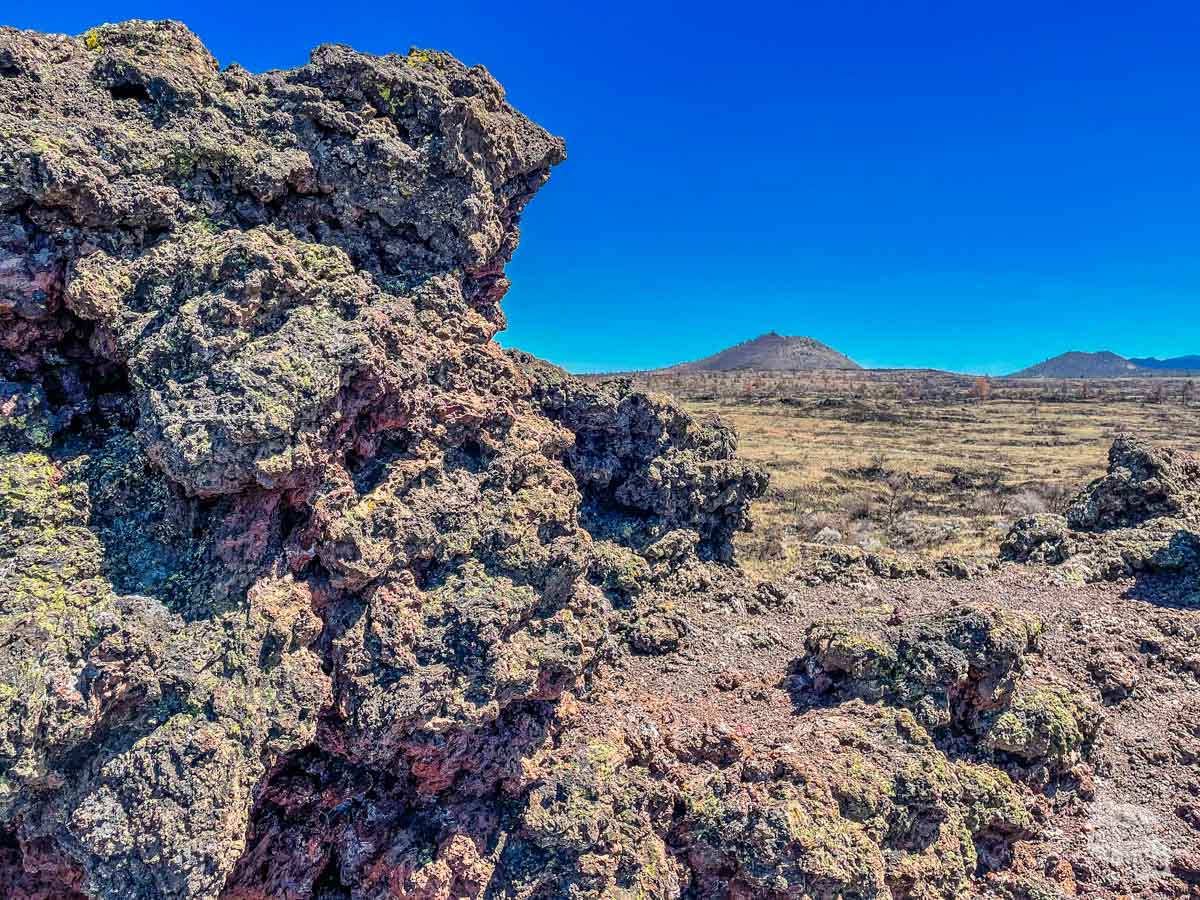
So, we decided to do our visit as a day trip from Crater Lake National Park. Since it was two hours each way, it did make for a long day but it worked reasonably well.
That said, we will be returning to the area to visit the Tule Lake National Monument, which was closed the day we visited. Tule Lake National Monument honors those who were held at Japanese internment camp here. When we do return, we will likely stay in nearby Klamath Falls, OR, which has a lot more in the way of hotels, campgrounds and restaurants.
Read TripAdvisor Reviews and Book a Hotel
Final Thoughts on a Lava Beds National Monument Day Trip
We had a lot of fun on our Lava Beds National Monument day trip. We had a blast exploring the lava tubes. We especially enjoyed being able to explore the caves on our own rather than as part of a tour.
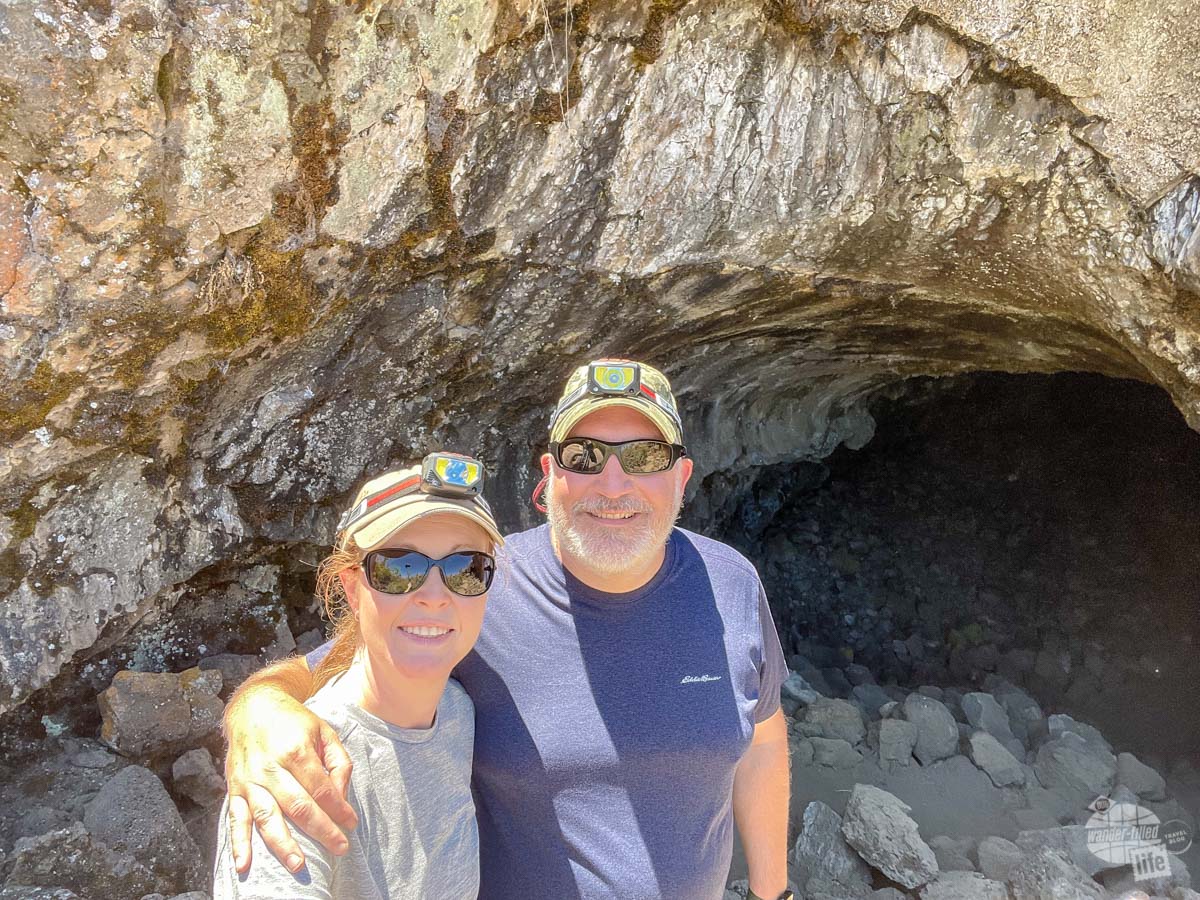
The above-ground part of the park is stark and dramatic. The damage from the recent wildfires was noticeable and it did close off parts of the park. Still, it was beautiful in its own way and enjoyed the hikes we took here.
In all, we had a great visit and are looking forward to returning to tour more of the lava tubes.
Travel Resources
What do you use to find a flight?
We use Skyscanner to find deals on flights. Skyscanner has a great interface and compares tons of airlines for the best pricing and routing. That said, it does not always have every airline and some airlines will have better deals on their website. Still, Skyscanner is a great place to start.
Click here to search for a flight.
What do you use to find a hotel?
We typically stay at Hilton properties, so we use the Hilton website. You can find good Hilton Honors discounts or AAA discounts for a hotel there. We make great use of our free night certificates from our Hilton Honors American Express.
Click here to book a Hilton property.
If there are no Hilton properties available, we use TripAdvisor to read reviews and book the hotel. We find we can get the best price that way.
Click here to search for a hotel.
We recently partnered with Stay22 to add interactive maps to each of our destination posts. This will allow you to see a plethora of hotels and vacation rentals all in one responsive map of the area.
What if I need more space than I can get at a hotel?
We use Vrbo for the times when we have rented a cabin for a weekend getaway, like this cabin in Townsend, TN, or needed to rent a house for a large family vacation. We had a great experience with them in terms of refunding deposits when COVID hit and will continue to use them.
Click here to search for a vacation rental.
Who do you use for rental cars?
As a general rule, we book with Hertz for rental cars. We have had nothing but good experiences with them. Plus, we really like unlimited mileage and not worrying about crossing state lines. We have even rented from Hertz overseas in both Slovenia and Croatia.
Click here to book a rental car.
How about booking a cruise?
We have found some amazing prices for booking a cruise through Cruise Direct. We have saved a lot of money on our cruises compared to what we found elsewhere, making a last-minute Bahamas cruise even cheaper.
Click here to book a cruise.
What if I want to rent an RV?
We highly recommend Outdoorsy for RV rentals. We rented a camper van for a week to visit Rocky Mountain National Park for the elk rut and Custer State Park for the Buffalo Round-Up and had a blast. The program was easy to use and we really enjoyed the freedom of having a camper van for that trip.
Click here to rent an RV.
What do you use for booking tours?
We don’t often book tours. Typically, we like to do stuff on our own. That said, there are some experiences you can’t have any other way. So, when we do want to book a tour, we always check Viator first.
Click here to book a tour.
Do you use anything to get discounts on the road?
We make extensive use of both Good Sam and AAA on the road. Good Sam is normally regarded as a discount card for RVers at campgrounds and Camping World but anyone can use the 5 cents off a gallon at the pump at both Pilot and Flying J.
Click here to get a Good Sam membership.
We have had AAA as long as we have been married and it has more than paid for itself in discounts at hotels, aside from the peace of mind of having roadside assistance. Add in paper maps and the ability to get an international driver’s license and it is more than worth it for any traveler out there.
Click here to get a AAA membership.
